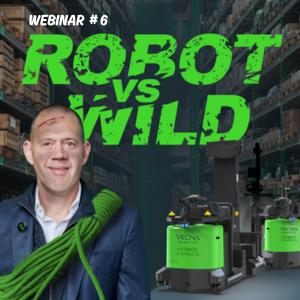Every operations team needs to evaluate the ROI before allocating budget towards a new industrial automation project. However, many organizations do not understand the shift in ROI calculation for the newer (robotic) technologies that are available. Here is a step-by-step guide to assist teams with evaluating project ROI for automation technology.
The ultimate guide to evaluating ROI for industrial automation
Step 1: What is your operations existing financial situation
- What is the cost to run distribution operations relative to total sales? (distribution cost – as a percentage of sales)
- What is the cost to run distribution operations relative to the total units shipped through the operation? (distribution cost – per unit shipped)
- What is the finished goods inventory on hand to cover a number of days of projected usage? (inventory days of supply)
- How many labor hours are dedicated to your current operation during times of typical order volume as well as peak surge times? (staffing/labor hours)
Step 2: Metric us the most appropriate way to measure operational goals?
Check-in with your leadership team to understand what the goals are as a business or business unit. Often, business units are moving towards becoming profit centers instead of cost centers, and cost savings is not the only requirement if a company is racing to grow market share. Does your operation have any of these goals in mind?
- Low shipping costs
- Fast service
- Smooth operations
- Geographic growth
- Healthy/safe workforce
- Customer service improvement
Step 3: Is your company ready for automation?
Emerging robotic technologies allow logistic operations the ability to deploy material handling equipment with a much lower up-front cost, install time, and financing options. This is an opportunity for smaller organizations, who were unable to justify the cost of automation install before, to reap the benefits. Best practices imply it is best to dedicate specific individuals with the project responsibility.
- Do you have dedicated personnel in place for managing process change?
- Do you have internal or external IT and maintenance support for the proposed technology (and any associated data migration) tasks?
- Have you completed a candid, self-assessment of your technical and cultural readiness?
Step 4: Conduct a Simulation
When possible, conduct a simulation to model the process you are looking to automate. This will give you a greater understanding of the upstream and downstream impact of automation. (Vecna Robotics offers simulation services for this)
- Has data been collected from all relevant process steps you want to automate?
- What are the performance metrics of the process step?
- What is the cost of the current process step?
- What is the revenue potential for improvement in this process step?
Step 6: Calculate “Soft” ROI
- How much headcount would be reallocated to higher value tasks?
- What is the reported injury rate for the selected process step?
- Will any floor space be saved or reallocated due to the process change?
- Would the automation install reduce the need for specific training?
- What is the turnover rate for this position?
- Would automation install reduce facility or product damage?
Step 7: Test ROI Assumptions and Deploy Gradually
Facilities do not need to do a large install and be saddled with a mistake; new robotic systems can be iterated upon during phased deployment. Therefore, improvements can be seen with a lower upfront project cost; and teams may measure the technology’s impact on current operations, simulate subsequent installs, and expand the use of automation over time.
Sometimes, teams calculate ROI by calculating the shift in headcount. However, the value of a new robotic system is derived by creating new agile and flexible workflows where every part of the operation performs optimally during times of peak demand. The cost of an install needs to be compared to its overall value for how it benefits the whole operation, and ROI is a measure of value towards organizational goals. “Robots” shall be considered tools that perform tasks efficiently, and reliably, with a lower up-front cost than the technologies of the past
Want to know more?
Learn about Vecna Robotics’ entire fleet of self-driving vehicles from our Automated Material Handling and Hybrid Fulfillment brochures. Vecna will be displaying a wide range of vehicles, including its autonomous Tugger and Pallet Jack at booth #S5483. We’ll be showcasing our Automated Material Handling, Hybrid Fulfillment, and Workflow Optimization solutions, along with the self-driving vehicles and technology that fuels them.





